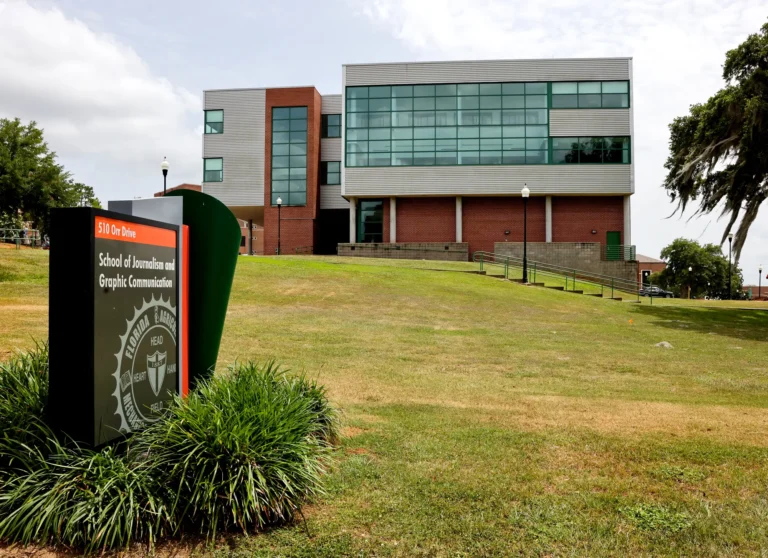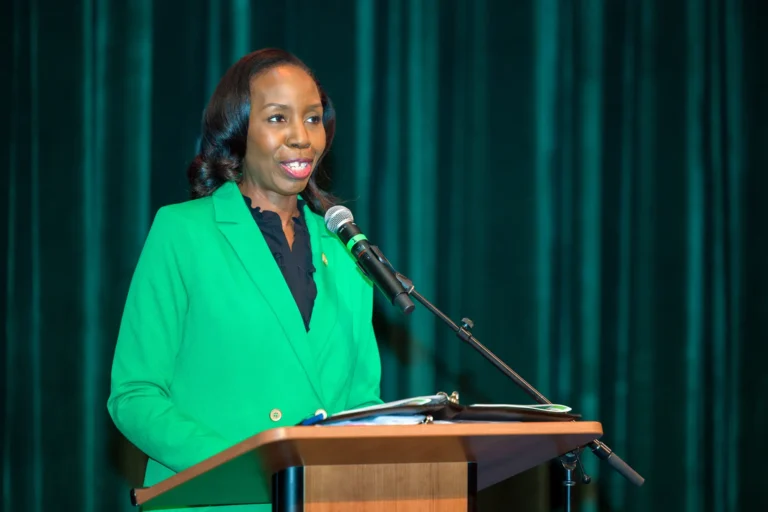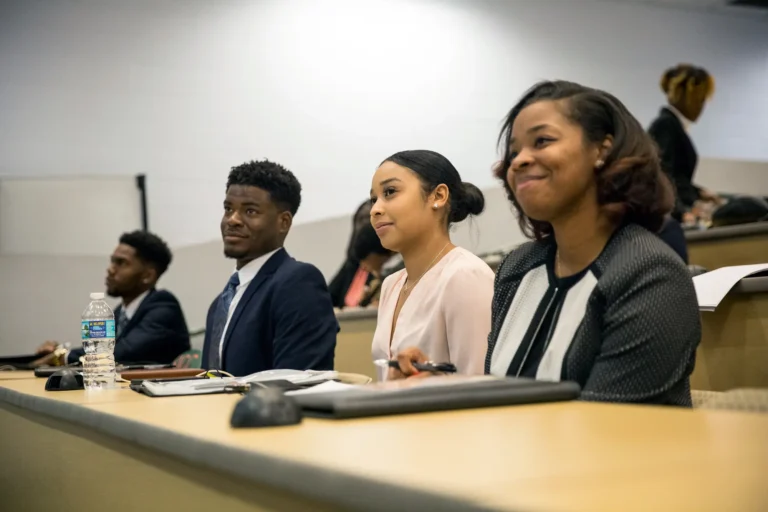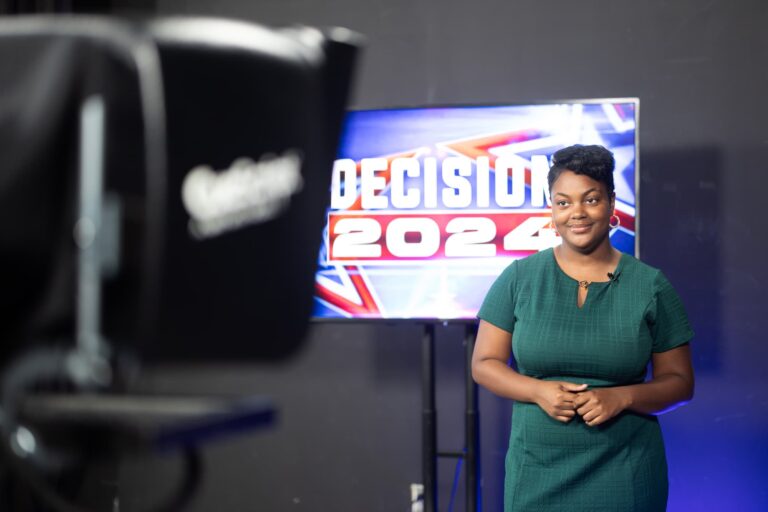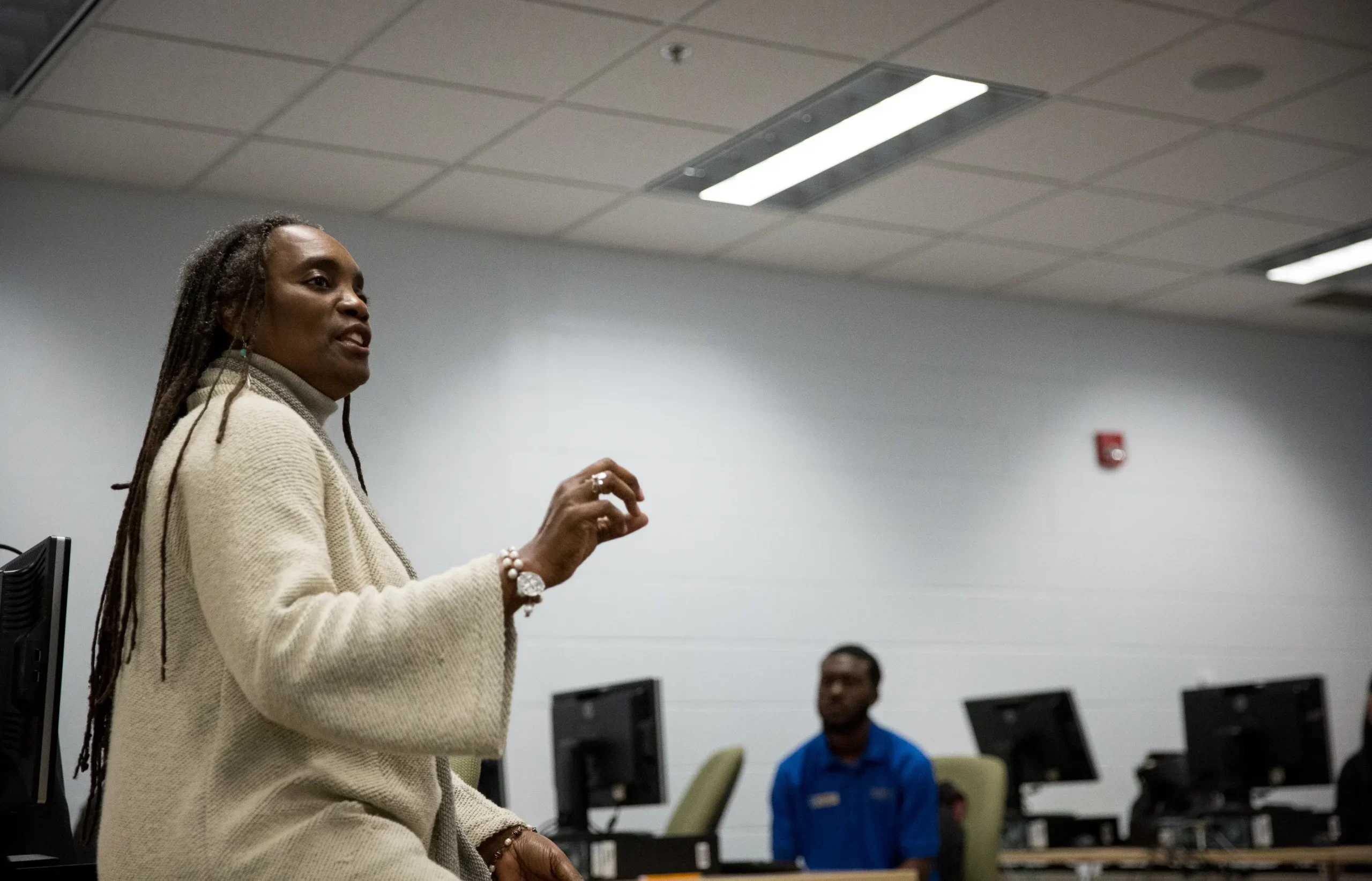
Executive Summary
The School of Journalism & Graphic Communication (SJGC) strives to provide an excellent journalism education and relevance to the industry through its curriculum aimed at producing the best and brightest journalists and public relations practitioners for this evolving industry. Students within the Division of Journalism may obtain Bachelor of Science degrees in either journalism or public relations. Both programs require students to complete 120 credit hours, which includes at least 70 semester credit hours taken outside journalism and public relations.
Please respond to each of the following instructions:
- Use the following format to provide an outline of the curriculum required for the major and for each of the unit’s specializations. Add lines for courses and categories as needed. (Please see example provided separately with this template.)
Number of hours/units required for graduation: 120
Number of hours/units required for major degree: 120
Core Courses for All Students in Program (21 credits earned)
| Journalism | Credits |
|---|---|
| Language Skills for Media Professionals | 3 |
| Introduction to Mass Media | 3 |
| Reporting & Writing I | 3 |
| Reporting & Writing II | 3 |
| Reporting & Writing III | 3 |
| Professional Development Colloquium | 1 |
| Communication Law and Media Ethics | 3 |
| Senior Capstone Colloquium | 1 |
| Internship | 1 |
| Public Relations | Credits |
|---|---|
| Language Skills for Media Professionals | 3 |
| Reporting & Writing I | 3 |
| Reporting & Writing II | 3 |
| Reporting & Writing III | 3 |
| Introduction to Mass Media | 3 |
| Professional Development Colloquium | 1 |
| Communication Law and Media Ethics | 3 |
| Senior Capstone Colloquium | 1 |
| Internship | 1 |
Additional courses in sequence that all students in sequence must take:
Degree/Emphasis (provide number of credits earned)
Journalism
Use of Information Resources (3)
Multimedia Oral Engagement (3)
International Issues & The Media (3)
Public Relations
Intro to Public Relations (3)
Social Media/Data Analytics (3)
Integrated Marketing Communication (3)
PR Research & Strategies (3)
PR Agency (3)
Strategic Communication (3)
Elective course or courses that must be taken within the sequence
Basic Computer Operations (2)
Basic Design Principles (3)
Visual Storytelling (3)
Entrepreneurship, Leadership & Innovation (3)
Capital Bureau (3)
Social Justice, Thought & The Media (3)
Emerging Media Technologies or Special Topics (3)
Documentary & Film (3)
Magazine Article Writing (3)
Persuasive/Analytical Writing (3)
Elective courses that must be taken within the program
First Year Experience Seminar (2)
Required outside of the accredited unit
Principles of Marketing (3)
Freshman Communication Skills I (3)
Freshman Communication Skills II (3)
Historical Survey I or equivalent (3)
Mathematics (3)
American National Government or U.S. History 1865 to Present (3)
Public Speaking or equivalent (3)
State & Local Government (3)
Intro to Environmental Science or equivalent (3)
Intro to Theatre (3)
Intro to Sociology or equivalent (3)
Biological Science or equivalent (3)
African American Experience (3)
World Regional Geography (3)
Intro to Literature or equivalent (3)
Principles of Economics I (3)
Intro to Logic or Religion equivalent (3)
Intro to Psychology or equivalent (3)
U.S. History 1492-1865 or 2020 (3)
African American Literature or equivalent (3)
- Explain how students in the unit complete academic requirements for the baccalaureate degree that meet the liberal arts and sciences general education requirements of the institution. How is your unit meeting the spirit of a liberal arts and sciences education? Identify classes within the unit that contribute to a liberal arts and social sciences perspective for graduates from the unit. If a minor is required, include these details.
Florida A&M University’s General Education Assessment Committee, in collaboration with faculty, has defined college-level knowledge and competencies that are linked to the University’s mission and goals and requirements for a general education. By taking general education courses, students are expected to exhibit the following skills:
- Communication: Clear and effective expression in writing and speech.
- Critical Thinking: Analyzing, solving problems, and creative thinking.
- Social and Ethical Responsibility: Upholding principles of academic integrity, diversity, and cooperation.
- Quantitative Reasoning: Applying numerical concepts to solve real-world problems.
The unit is meeting the spirit of a liberal arts and sciences general education by requiring its students to take 60 credit hours of gen ed courses that include Mathematics, Natural Sciences, Psychology, Sociology, Geography, American History, Literature and Economics.
With the combination of gen ed, journalism and public relations classes, students learn proficiency in writing, reading, and speaking; how to weigh evidence, analyze arguments, and solve problems logically; demonstrate integrity and respect for diversity; and understand the consequences of unethical behavior.
The Division of Journalism offers MMC 2000 Introduction to Mass Media and PUR 3000 Introduction to Public Relations as service courses that support the humanities in curricula for other units. Other division courses that are open to majors outside the unit are:
- JOU 1040 Language Skills for Media Professionals
- JOU 1112 Uses of Information Resources
- RTV 2230 Multimedia Oral Engagement
- MMC 2605 Social Justice, Thought and the Media
- MMC 2310 International Issues in the Media
- MMC 2264 Emerging Media Technologies
- MMC 2930 Special Topics
- Explain how the unit provides a balance among theoretical/conceptual courses and professional skills courses.
Foundational courses such as Introduction to Mass Media and Introduction to Public Relations explore media concepts and theories of the disciplines. Relevant theories and concepts are also built into core courses such as Communication Law & Ethics and PR Research & Strategies. As students progress in the journalism major, fundamental principles and professional practices are taught in Use of Information Resources, Language Skills for Media Professionals, Reporting & Writing I, II and III. In the upper division courses, students apply their knowledge of theory to practice through experiential learning in TV News, Capital Bureau, Magazine Article Writing, Advanced TV News, Documentary & Film. In public relations, students apply their theoretical knowledge for practical application in PR Agency, Integrated Marketing Communication and Strategic Communication. All PR majors must also take professional skills courses: Visual Storytelling, Multimedia Oral Engagement and Social Media/Data Analytics.
- Describe how the core and required courses instruct majors in ACEJMC’s 10 professional values and competencies.
The Division of Journalism uses ACEJMC’s professional values and competencies, as outlined below, to guide its instruction and assessment of student learning outcomes.
ACEJMC Professional Values and Competencies:
The Accrediting Council on Education in Journalism and Mass Communications requires that graduates of accredited programs be aware of certain core values and competencies and be able to:
- Apply the principles and laws of freedom of speech and press, in a global context, and for the country in which the institution that invites ACEJMC is located;
- Demonstrate an understanding of the multicultural history and role of professionals and institutions in shaping communications;
- Demonstrate culturally proficient communication that empowers those traditionally disenfranchised in society, especially as grounded in race, ethnicity, gender, sexual orientation, and ability, domestically and globally, across communication and media contexts;
- Present images and information effectively and creatively, using appropriate tools and technologies;
- Write correctly and clearly in forms and styles appropriate for the communications professions, audiences, and purposes they serve;
- Demonstrate an understanding of professional ethical principles and work ethically in pursuit of truth, accuracy, fairness, and diversity;
- Apply critical thinking skills in conducting research and evaluating information by methods appropriate to the communications professions in which they work;
- Effectively and correctly apply basic numerical and statistical concepts;
- Critically evaluate their own work and that of others for accuracy and fairness, clarity, appropriate style and grammatical correctness;
- Apply tools and technologies appropriate for the communications professions in which they work.
To ensure that students have a solid foundation in what the school considers to be the essential elements, students spend four semesters learning the basics of journalism and public relations in Use of Information Resources; Language Skills for Media Professionals; Reporting & Writing I, II and III; Introduction to Mass Communication; Introduction to Public Relations; and Strategic Communication.
- Use of Information Resources teaches students how to conduct research and evaluate information using public records, web searches and tools appropriate for the profession. Students learn to use different information resources to produce various forms of storytelling including, but not limited to, news articles, newscasts, TV news packages, podcasts, public relations/affairs campaigns, public relations/affairs graphics, PSAs, media releases and online news. Students are also instructed on the difference between primary and secondary sources and familiarity with certain technical and media jargon.
- Language Skills for Media Professionals explores and reinforces the application of the basic principles of grammar, punctuation and composition needed for clear and effective writing. Students learn about news judgment, foundational news writing and AP Style.
- Reporting & Writing I is the first in a series of three research, reporting and writing courses required for all students majoring in journalism and public relations. Students focus on the basic concepts of news judgment, news gathering, interviewing, law and ethics, AP Style, quotes and attribution, storytelling, and news writing. They learn professional ethical principles and the importance of truth, accuracy, and fairness in reporting. Students write two basic news stories that can be submitted for publication.
- Reporting & Writing II provides a continuation of skills and techniques learned in Reporting & Writing I. Students learn how to cover a variety of news events, such as news conferences and meetings, using multimedia. They are also introduced to beats and features. Students write five stories that can be submitted for publication.
- Reporting & Writing III provides practice in advanced news reporting and writing with emphasis placed on using multimedia storytelling techniques, public affairs reporting and computer-assisted reporting, and niche reporting such as investigative, business, science, health, sports, and other types of reporting. At this stage, students can critically evaluate their work and that of others producing content for the school’s student publications, newscasts, and websites. Students produce seven stories that can be submitted for publication.
- Introduction to Mass Communication introduces students to the historical and societal aspects of modern mass media. They gain understanding of the role professionals and institutions play in shaping communication.
- Introduction to Public Relations provides students with an overview of the fundamental theories and processes related to public relations, tracing growth and development of the field to current and modern-day practices. Students learn how to apply public relations techniques within corporations, government agencies and service organizations.
- Strategic Communication provides students with a foundational understanding of strategic and culturally proficient communication, PR planning, communication tools and branding. They learn to strengthen their writing skills through assignments and apply tools and techniques appropriate for the profession in which they will work.
The ACEJMC professional values and competencies are fortified in the upper division courses such as TV News, SJGC Capital Bureau, Magazine Article Writing, Advanced TV News, Documentary & Film, PR Research & Strategies, PR Agency, and Integrated Marketing Communication.
- TV News prepares students for reporting, writing, and producing TV news stories on deadline using industry-standard tools and technology. The course places a particular emphasis on ethical and legal matters in TV news.
- Capital Bureau provides students with knowledge of the various methods and multimedia techniques used to gather, produce, and disseminate news focusing on the statehouse, local government, and community issues.
- Magazine Article Writing teaches students how to write and pitch articles to various publications, focusing on the different forms and styles appropriate for diverse audiences.
- Advanced TV News provides a higher level of instruction related to methods of planning, producing, and directing a professional live newscast. Students use technologies and tools to effectively and creatively present images and information to their audiences.
- Documentary & Film involves instruction of documentary research, producing and writing skills. The course results in students producing award-winning documentaries. Many of the students have utilized their experience and projects in the class to gain long-term careers in the field.
- PR Research & Strategies focuses on research methodology needed for effective communication in the public and private sectors. Emphasis is placed on teamwork, individual effort, traditional and social media, presentation and research skills, and effective writing.
- Integrated Marketing Communication provides students an opportunity to produce quality IMC projects for SJGC student media outlets; instruction on using digital technology tools and terminology of public relations and marketing; creation of multimedia projects for news conferences.
- PR Agency provides students with experience in creating a comprehensive campaign on behalf of a client. The students propose a research-based strategy, budget, and timeline to meet the client’s goals and objectives. Upon client approval, the students will execute standard public relations tactics and present evidence of the campaign’s impact to the client.
| Course | Student Outcomes | ACEJMC Values & Competencies |
|---|---|---|
| Use of Information Resources | Conduct research, evaluate information, use public records, web searches, produce various storytelling forms, differentiate primary and secondary sources, understand technical and media jargon. | Apply critical thinking skills in conducting research and evaluating information by methods appropriate to the communications professions in which they work. Effectively and correctly apply basic numerical and statistical concepts. |
| Language Skills for Media Professionals | Apply principles of grammar, punctuation, composition, news judgment, foundational news writing, AP Style. | Write correctly and clearly in forms and styles appropriate for the communications professions, audiences, and purposes they serve. |
| Reporting & Writing I | Learn about news judgment, news gathering, interviewing, law and ethics, AP Style, quotes and attribution, storytelling, news writing, professional ethical principles, accuracy, fairness; write two basic news stories. | Write correctly and clearly in forms and styles appropriate for the communications professions, audiences, and purposes they serve. Demonstrate an understanding of professional ethical principles and work ethically in pursuit of truth, accuracy, fairness, and diversity. |
| Reporting & Writing II | Cover news events, use multimedia, beats and features, write five stories for publication. | Write correctly and clearly in forms and styles appropriate for the communications professions, audiences, and purposes they serve. Present images and information effectively and creatively, using appropriate tools and technologies. |
| Reporting & Writing III | Advanced news reporting, multimedia storytelling, public affairs reporting, computer-assisted reporting, investigative/business/science/health/sports reporting, critically evaluate work; produce seven stories for publication. | Write correctly and clearly in forms and styles appropriate for the communications professions, audiences, and purposes they serve. Present images and information effectively and creatively, using appropriate tools and technologies. Critically evaluate their own work and that of others for accuracy and fairness, clarity, appropriate style and grammatical correctness. |
| Introduction to Mass Communication | Understand historical and societal aspects of modern mass media, roles of professionals and institutions in shaping communication. | Demonstrate an understanding of the multicultural history and role of professionals and institutions in shaping communications. Apply the principles and laws of freedom of speech and press, in a global context, and for the country in which the institution that invites ACEJMC is located. |
| Introduction to Public Relations | Overview of public relations theories and processes, growth, and development, apply PR techniques in various sectors. | Demonstrate an understanding of the multicultural history and role of professionals and institutions in shaping communications. |
| Strategic Communication | Foundational understanding of strategic communication, PR planning, communication tools, branding, strengthen writing skills, apply tools and techniques. | Demonstrate culturally proficient communication that empowers those traditionally disenfranchised in society, especially as grounded in race, ethnicity, gender, sexual orientation, and ability, domestically and globally, across communication and media contexts. Write correctly and clearly in forms and styles appropriate for the communications professions, audiences, and purposes they serve. |
| TV News | Reporting, writing, producing TV news stories, use industry-standard tools and technology, ethical and legal matters. | Apply tools and technologies appropriate for the communications professions in which they work. Present images and information effectively and creatively, using appropriate tools and technologies. Write correctly and clearly in forms and styles appropriate for the communications professions, audiences, and purposes they serve. |
| Capital Bureau | Gather, produce, disseminate news focusing on statehouse, local government, community issues using multimedia techniques. | Write correctly and clearly in forms and styles appropriate for the communications professions, audiences, and purposes they serve. Apply tools and technologies appropriate for the communications professions in which they work. |
| Magazine Article Writing | Pitch and write articles, understand different forms and styles for diverse audiences. | Write correctly and clearly in forms and styles appropriate for the communications professions, audiences, and purposes they serve. Critically evaluate their own work and that of others for accuracy and fairness, clarity, appropriate style and grammatical correctness. |
| Advanced TV News | Plan, produce, direct a professional live newscast, use technologies and tools creatively. | Apply tools and technologies appropriate for the communications professions in which they work. Present images and information effectively and creatively, using appropriate tools and technologies. Write correctly and clearly in forms and styles appropriate for the communications professions, audiences, and purposes they serve. |
| Documentary & Film | Documentary research, producing, writing skills, produce award-winning documentaries. | Demonstrate culturally proficient communication that empowers those traditionally disenfranchised in society, especially as grounded in race, ethnicity, gender, sexual orientation, and ability, domestically and globally, across communication and media contexts. Present images and information effectively and creatively, using appropriate tools and technologies. |
| PR Research & Strategies | Research methodology, communication in public/private sectors, teamwork, traditional/social media, presentation, research skills, effective writing. | Apply critical thinking skills in conducting research and evaluating information by methods appropriate to the communications professions in which they work. Effectively and correctly apply basic numerical and statistical concepts. |
| Integrated Marketing Communication | Produce IMC projects, use digital technology tools, understand PR/marketing terminology, create multimedia projects for news conferences. | Apply tools and technologies appropriate for the communications professions in which they work. Write correctly and clearly in forms and styles appropriate for the communications professions, audiences, and purposes they serve. |
| PR Agency | Create a comprehensive campaign, propose research-based strategy, budget, timeline, execute PR tactics, present campaign impact. | Apply tools and technologies appropriate for the communications professions in which they work. Apply critical thinking skills in conducting research and evaluating information by methods appropriate to the communications professions in which they work. Demonstrate an understanding of professional ethical principles and work ethically in pursuit of truth, accuracy, fairness, and diversity. |
In addition to the accrediting standards aligned to ACEJMC’s Professional Values and Competencies, the unit has integrated diversity throughout its curriculum and require students to demonstrate their understanding of diversity and its relationship to journalism and public relations through presentations and group projects. One example is J-School Journals, an outcome of the Documentary & Film course that showcases student documentaries during a biannual event open to the community. The students’ stories focus on societal, cultural and identity issues that speak to all ages.
- Explain how instruction, whether on-site, online, synchronous, or asynchronous, responds to professional expectations of current digital, technological, and multimedia competencies.
The Division of Journalism addresses professional expectations in digital and multimedia competencies through the curriculum. This includes teaching students how to effectively use digital tools, platforms, and resources, and developing their ability to create, manage, and analyze multimedia content. Other methods consist of curriculum reviews by faculty, input from the school’s external advisory board, alumni, employers, and attendance at professional conferences.
The Curriculum Committee meets monthly to discuss updates to the curriculum based on research and feedback from conferences and other areas. By attending conferences and training, faculty enhance their skills, stay up to date with best practices in their field and incorporate the latest research findings, trends, and tech advancements into their instruction.
SJGC faculty have taken advantage of the following training activities in recent years:
- Faculty certification in E-Learning, leading to hybrid courses
- Sessions of the Broadcast Education Association via the National Association of Broadcasters
- Dow Jones News Fund’s Multimedia Training Academy
- Solutions Journalism Network HBCU/Black Press Academy + Lede Fellowship
- Workshops of the Investigative Reporters & Editors (IRE), National Association of Black Journalists, and Association for Education in Journalism and Mass Communication
Feedback on professional expectations is also gathered from SJGC’s external advisory board and alumni. Since 2018, the curriculum has been revised to emphasize multimedia and digital content, preparing students for careers in journalism, PR, and media. Students start with web design, visual storytelling and writing courses and end with professional presentations to faculty and industry professionals during the Senior Capstone course.
The journalism division’s Professional Development Colloquium course also focuses on preparing students for the workforce through instruction and guest speakers. The success of this approach is evident through student employment at top media outlets like CNN, Bloomberg News, Paramount, USA TODAY, and The E.W. Scripps Company.
- Explain how the accredited unit ensures consistency in learning objectives, workload, and standards in courses with multiple sections.
The Division of Journalism uses the following methods to ensure consistency in learning objectives, workloads, and standards in courses with multiple sections:
- As often as possible, the same professor, who has been deemed a subject matter expert, is enlisted to teach multiple sections of the same course. This approach provides a more solid foundation for the course content and delivery.
- Faculty meet to review and revise, pre- and post-tests given to students across courses with multiple sections.
- A standardized textbook, which is agreed upon by faculty, is used across all sections of a course in many courses. This helps to ensure that consistent learning objectives are included in each course, regardless of the instructor.
- For Reporting & Writing I, II, and III, faculty have agreed to use the same standards and objective outcomes.
- The program uses captains for each course. These captains help to develop a blueprint for each course so that there is consistency regardless of who teaches the course in future terms.
- Evaluations are conducted each semester and reviewed by the dean. This process helps to maintain consistent assessment and standards across all sections.
- Explain how the unit connects faculty and administrators to the professions they represent and the understanding of the skills needed to be successful in the workplace.
Faculty and administrators attend several training workshops and conferences in person and virtually throughout the year in addition to serving as presenters and panelists. They also remain connected to their respective professions through memberships to industry organizations and service on committees. This involvement enhances instruction, strengthens student outcomes, and keeps faculty and administrators abreast of industry trends and workforce needs.
Conferences attended by faculty and administrators include:
- NABJ Annual Conference
- AEJMC Annual Conference
- ASJMC Conference
- PRSSA ICON Conference
- BEA-at-Large Conference
- BEA Annual Spring Conference
- BEA Fall Conference
- ICA Annual Conference
In addition to attending external workshops, faculty typically organize in-house skills training at the beginning of the academic year. Their development and professional engagement are supported through the SJGC Knight Foundation Faculty Development Fund.
- Describe the methods used to select sites for internships for credit in the major, to supervise internship and work experience programs, to evaluate and grade students’ performance in these programs, and to award credit for internships or work experiences. In a separate digital file, provide the unit’s internship policy, questionnaires and other instruments used to monitor and evaluate internships and work experiences. Provide examples of recent internship sites, add as an appendix.
The School of Journalism & Graphic Communication’s Office of Career Success (OCS) offers a robust, industry-focused internship program. OCS fosters partnerships with companies and professional organizations across the U.S., ensuring valuable opportunities for all SJGC students. The selection of internship sites is based on both primary and secondary research. OCS uses various resources to find top opportunities, including:
- Chegg Internships
- Indeed
- Monster
- NBCU Academy Career Corner
- Professional industry newsletters
- Professional organizations (Society of Professional Journalists, National Association of Black Journalists, Public Relations Society of America, and others)
- FAMU Career & Professional Development Center
- SJGC Alumni
SJGC Internship Coordinator (Ranata Hughes) oversees the internship process to guarantee credible and effective work experiences. Journalism and PR students must enroll in an internship course for credit, where the internship coordinator and worksite supervisors monitor and evaluate their progress. The school strongly encourages students to pursue additional non-credit internships to gain additional experience.
Link for Internship Evaluation Form
Link for Internship Agreement Form
Link for Internship Data Form
Interning students are required to work 15-20 hours per week on assigned tasks during the spring and fall semesters. They must submit deliverables to the internship coordinator by the end of the semester and have their site supervisor provide an evaluation, which offers valuable feedback to the OCS. The final grade is based on an overall assessment of work performance and course participation, with students earning credit upon successful completion.
SJGC has established partnerships with diverse media organizations that frequently hire students as interns. Thanks to the impressive performance of students in these internships, SJGC partners often request to extend these relationships, creating more opportunities for students. Additionally, companies often proactively contact the school to be included in the pool of internship selections.
Students have secured internships with national and global corporations such as Disney, Bloomberg News, CNN, USA Today, TEGNA, NPR, Apple, JPMorgan Chase, Wells Fargo, Goldman Sachs, Edelman, Paramount, and Warner Bros. Locally and regionally, students have interned at the Tallahassee Democrat, Sachs Media Group, SalterMitchell PR, The Florida Lottery, Capital Outlook, WCTV, Cumulus Broadcasting, Tallahassee Magazine, WTXL, The Florida Channel, City of Miami, Tampa Bay Buccaneers and Big Bend Habitat for Humanity.
Link for SJGC Internship Page
